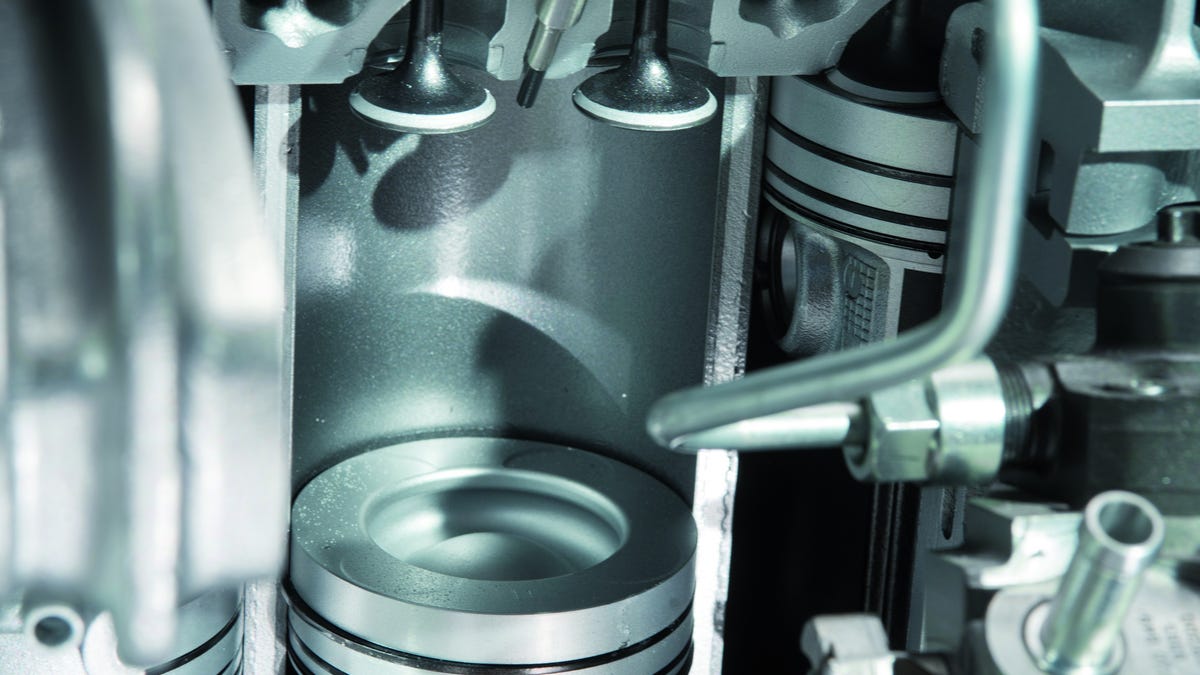Oily Bits: The Combustion Process
It's almost impossible to hear the phrase "Suck, squeeze, bang, blow" and not smile.

Despite sounding like a thoroughly entertaining evening out, it is actually a description for one of the most important processes in the majority of engines.
Known as the four-cycle, it is the process where a piston in an internal combustion engine goes through four distinct strokes in one complete cycle of the engine.
As previously mentioned, internal combustion engines use expanding gas to drive their components around. The up and down motion of the pistons is converted into rotational motion by the engine's crankshaft, which can then be used to drive a vehicle forward.
Conventional four-cylinder petrol engine have valves, located in the cylinder head, which control the flow of fresh mixture and exhaust gas in and out of the cylinder. The first stroke in the cycle is the intake stroke. The intake valves open and the piston starts traveling down the cylinder, drawing in fresh air and fuel. At the bottom of the stroke, power from other pistons or stored energy from a flywheel starts to push the piston back up the cylinder.
What follows is the compression stroke. As the piston travels upwards the intake valve closes, allowing the piston to squeeze the fuel and air mixture to a fraction of its original volume. Just as the piston nears the top of the chamber, a spark plug creates a spark, igniting the fuel-air mix.
Combustion of the mixture causes it to rapidly expand, starting the power stroke. During this the piston is driven down the cylinder. Both intake and exhaust valves are closed at this point, ensuring that the burning mixture doesn't escape from the combustion chamber and that as much energy as possible is used to push the piston down.
As the piston reaches the bottom of its stroke the exhaust valve begins to open, marking the beginning of the exhaust stroke. As the piston travels back up the cylinder it pushes the burnt gases out of the exhaust port. When the piston approaches the top of the cylinder the intake valve starts to open, in preparation for the start of the next induction stroke.
This process, while the engine is running, repeats continuously. When someone says "Suck, squeeze, bang, blow", they're referring to the four strokes in the four-stroke cycle: intake, compression, power and exhaust.
Diesel engines operate on a very similar cycle, which is unsurprisingly called the diesel cycle. Unlike the four-stroke cycle the engine only draws in air during the intake stroke. Fuel is, instead, added just as the piston reaches the top of its travel during the compression stroke.
The high temperature of the air in the combustion chamber, a result of it being so heavily compressed, causes the fuel to ignite and the cycle continues. That's why diesel engines are referred to as "compression ignition," as they require no spark. Petrol engines are "spark ignition" engines.
You may come across other cycles but, for the most part, the four-stroke and the diesel are the most common. If you have a car, which cycle does it use?